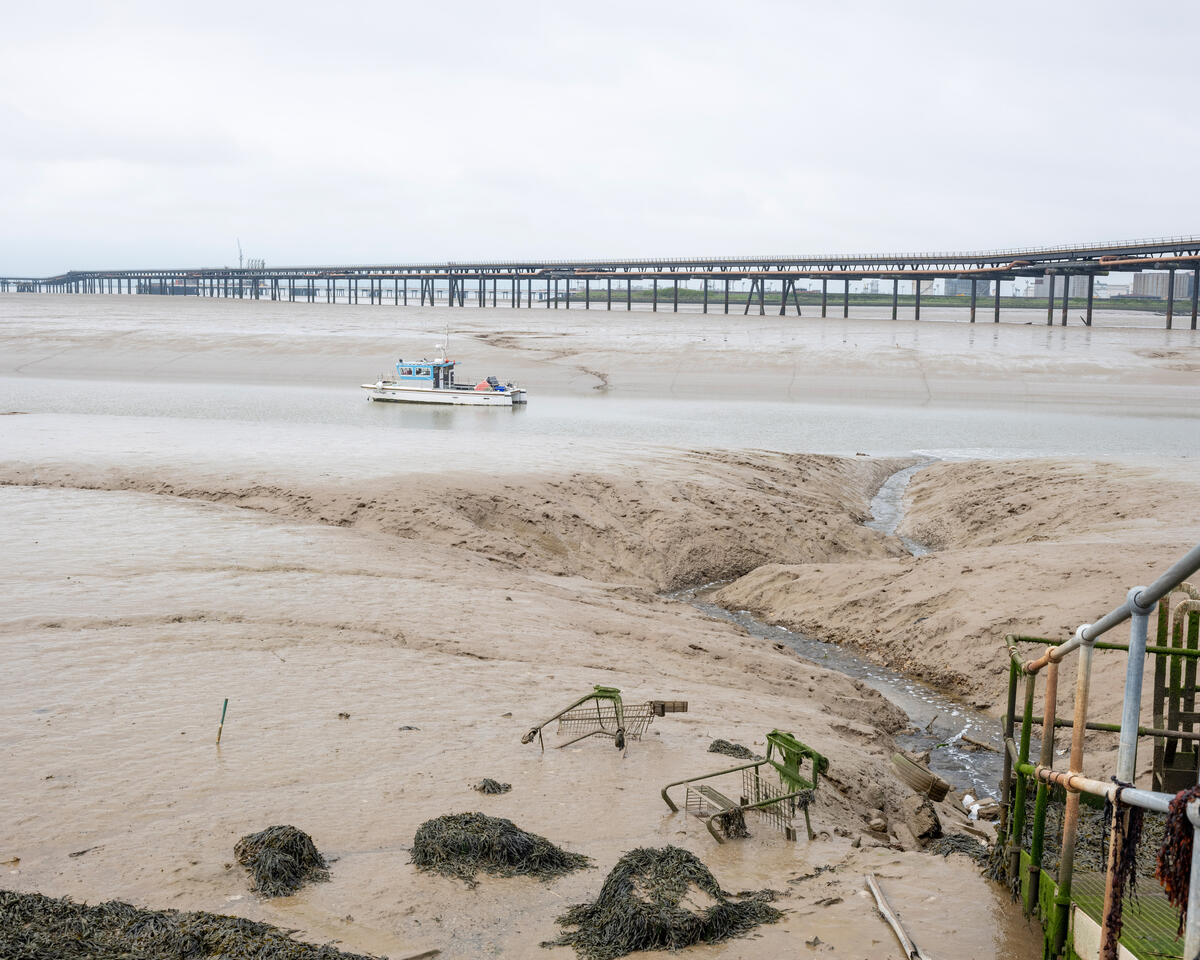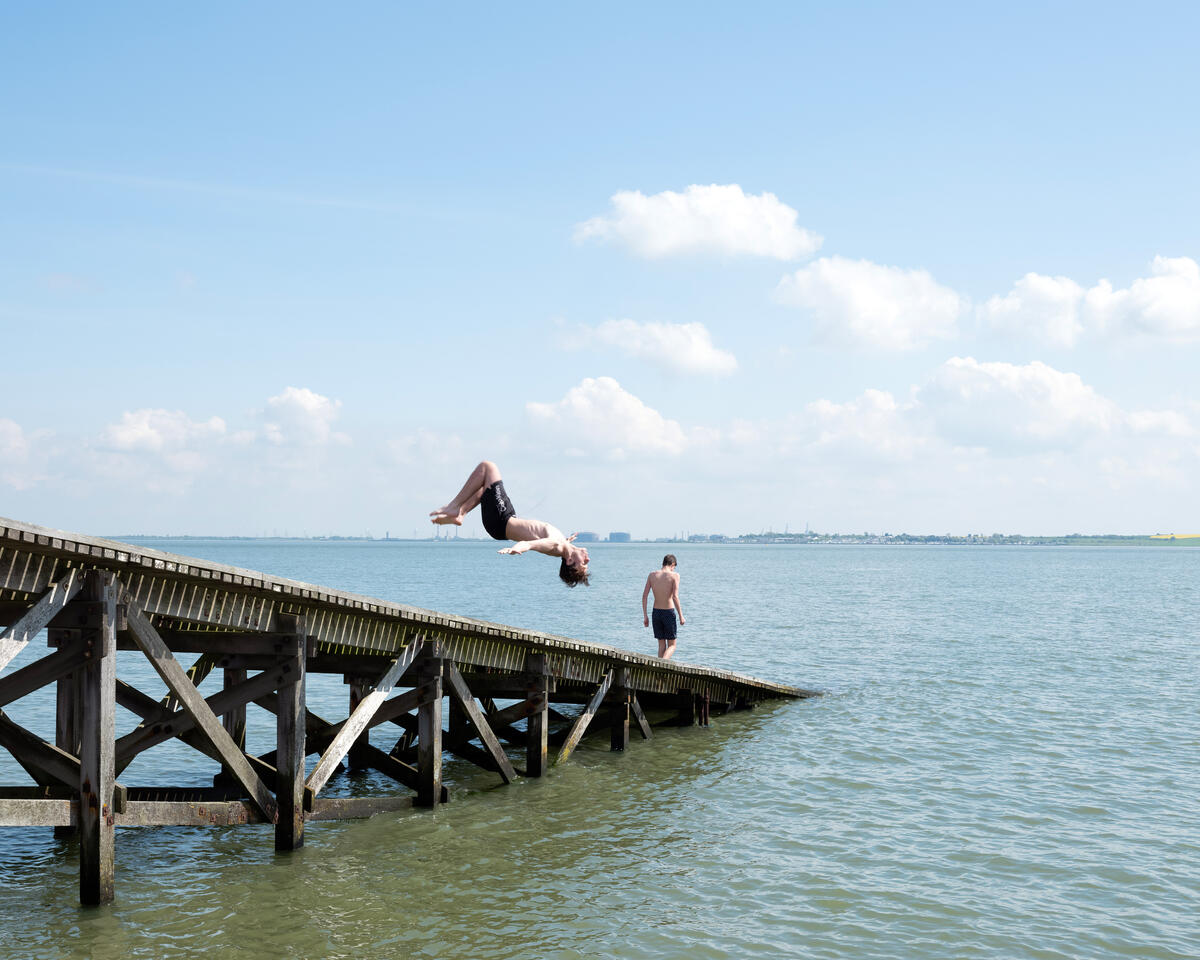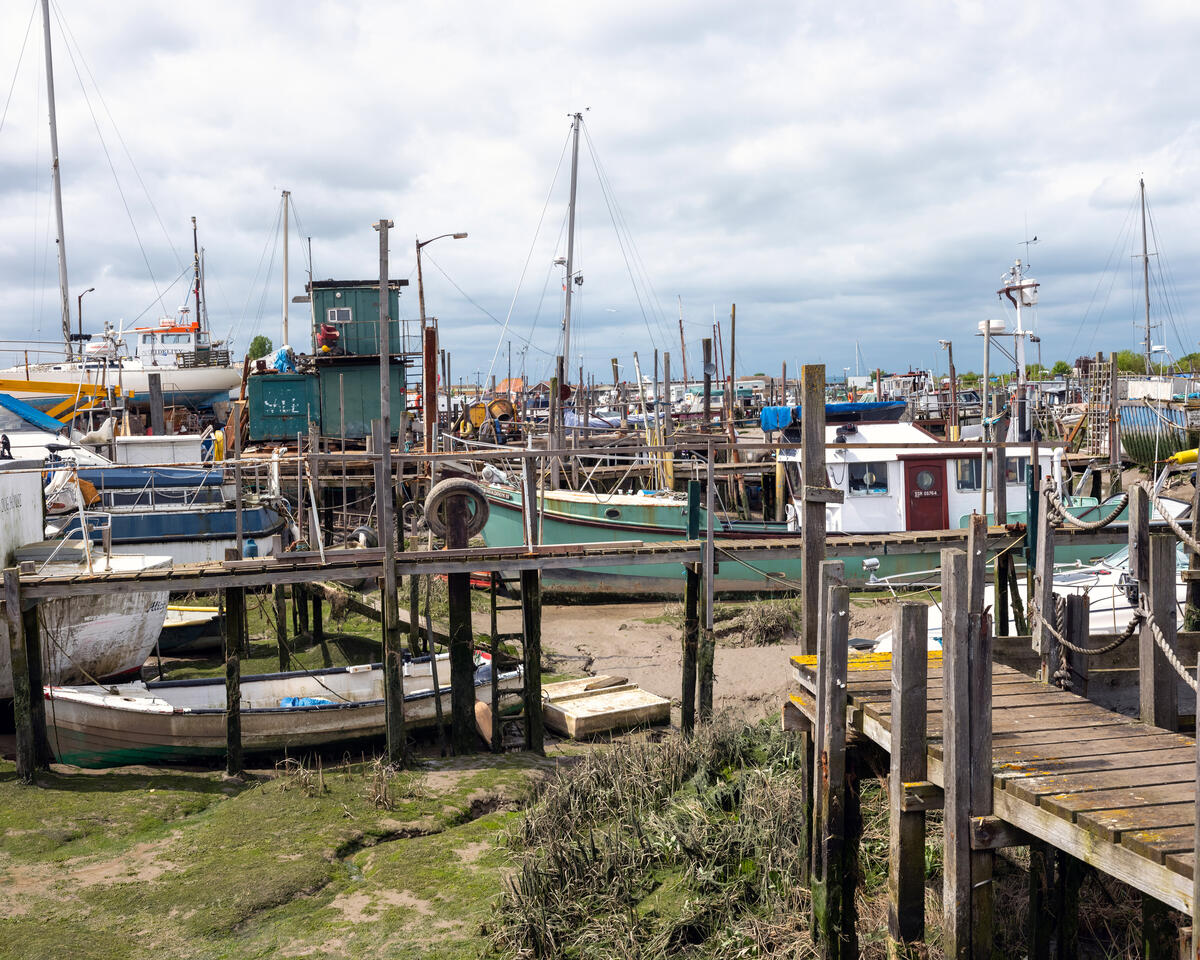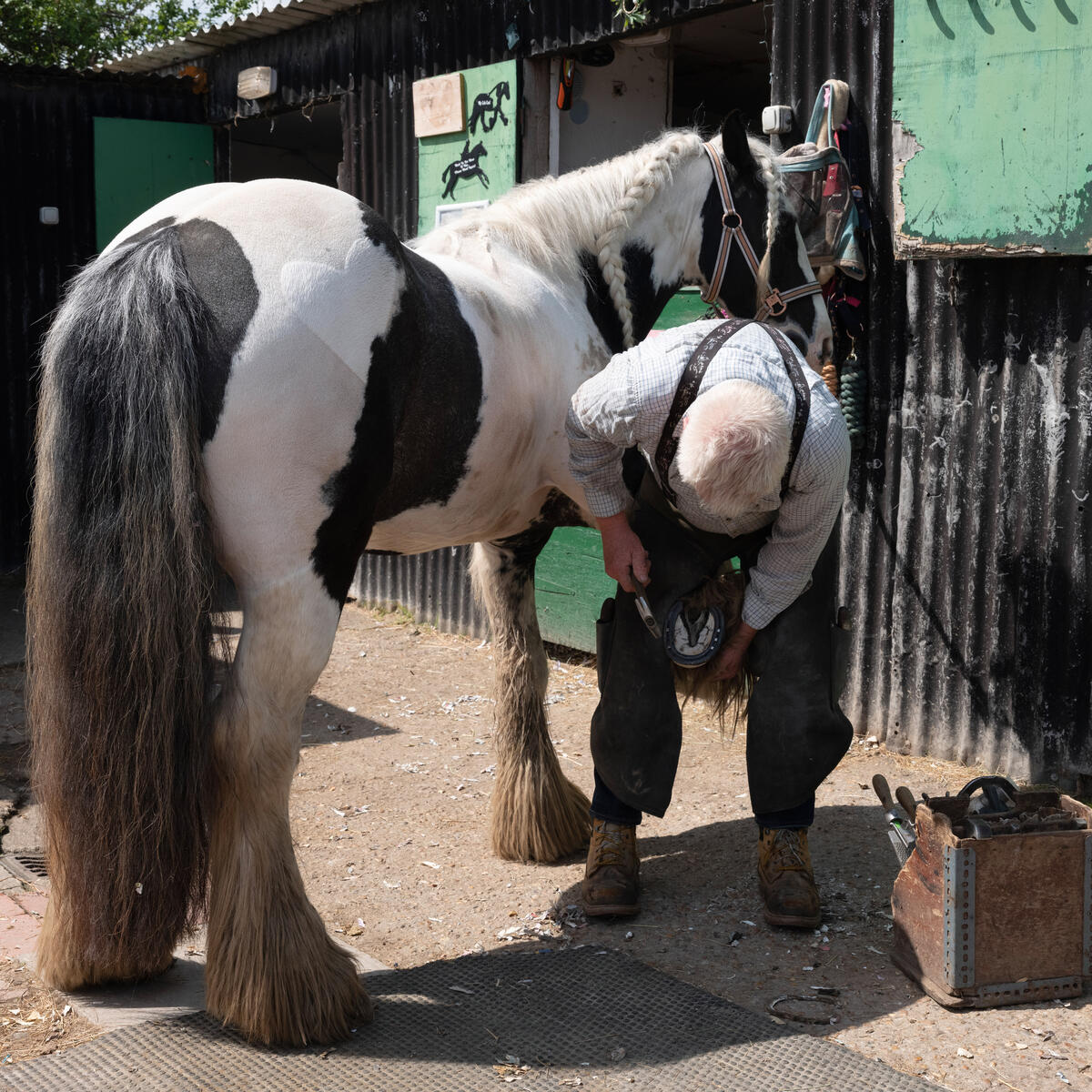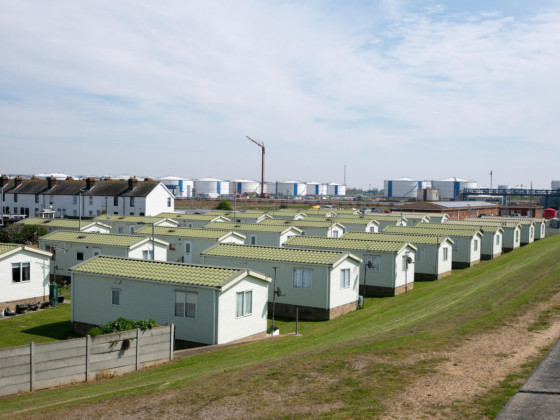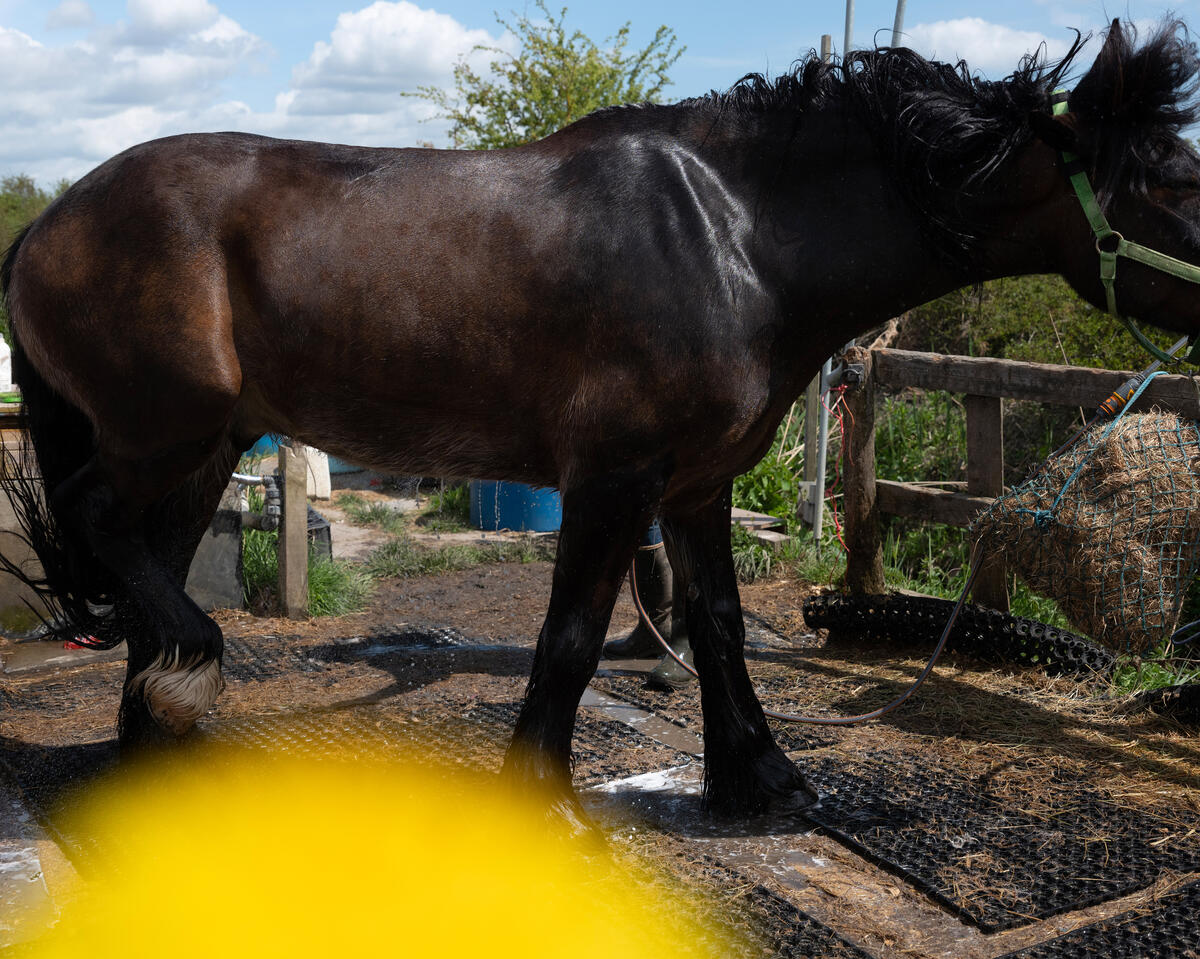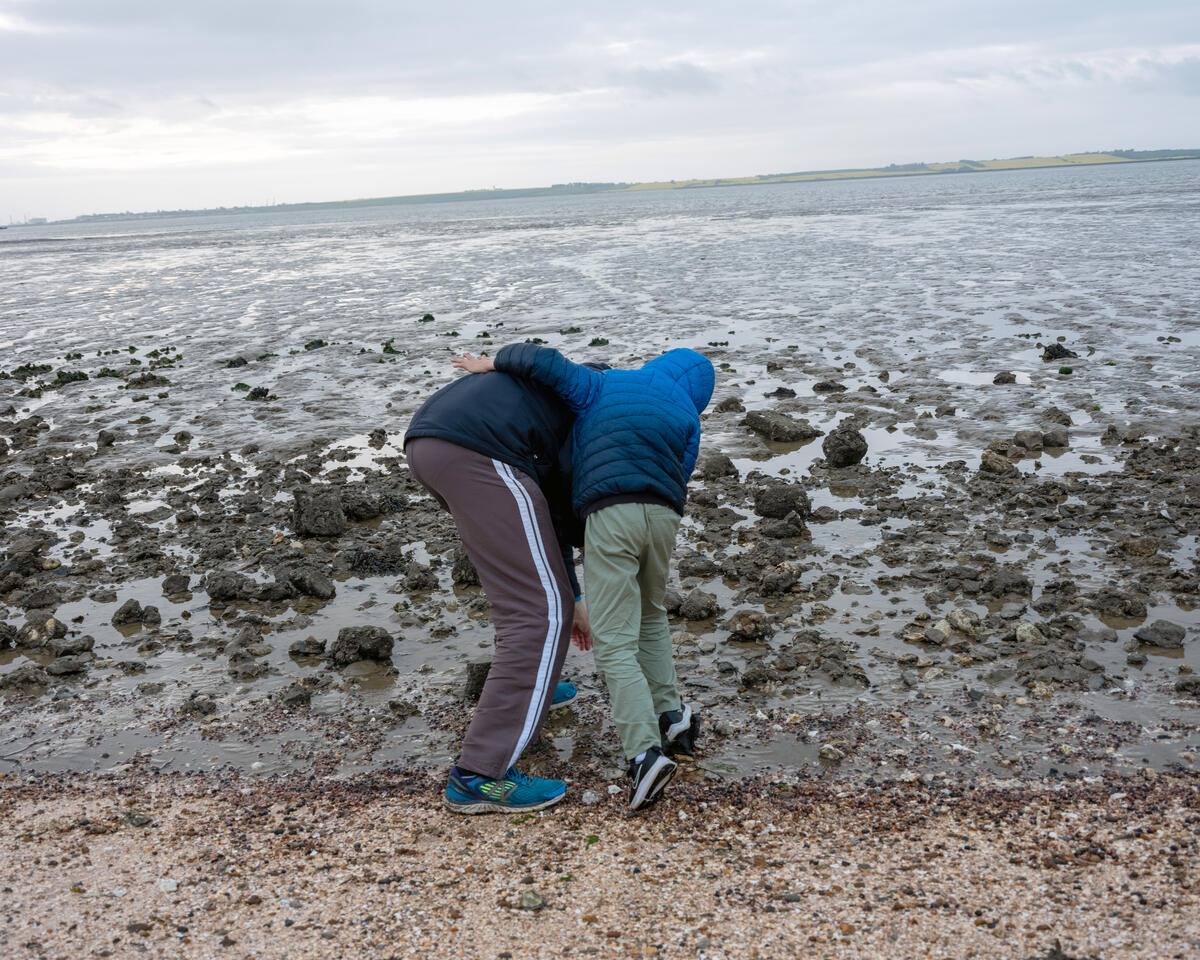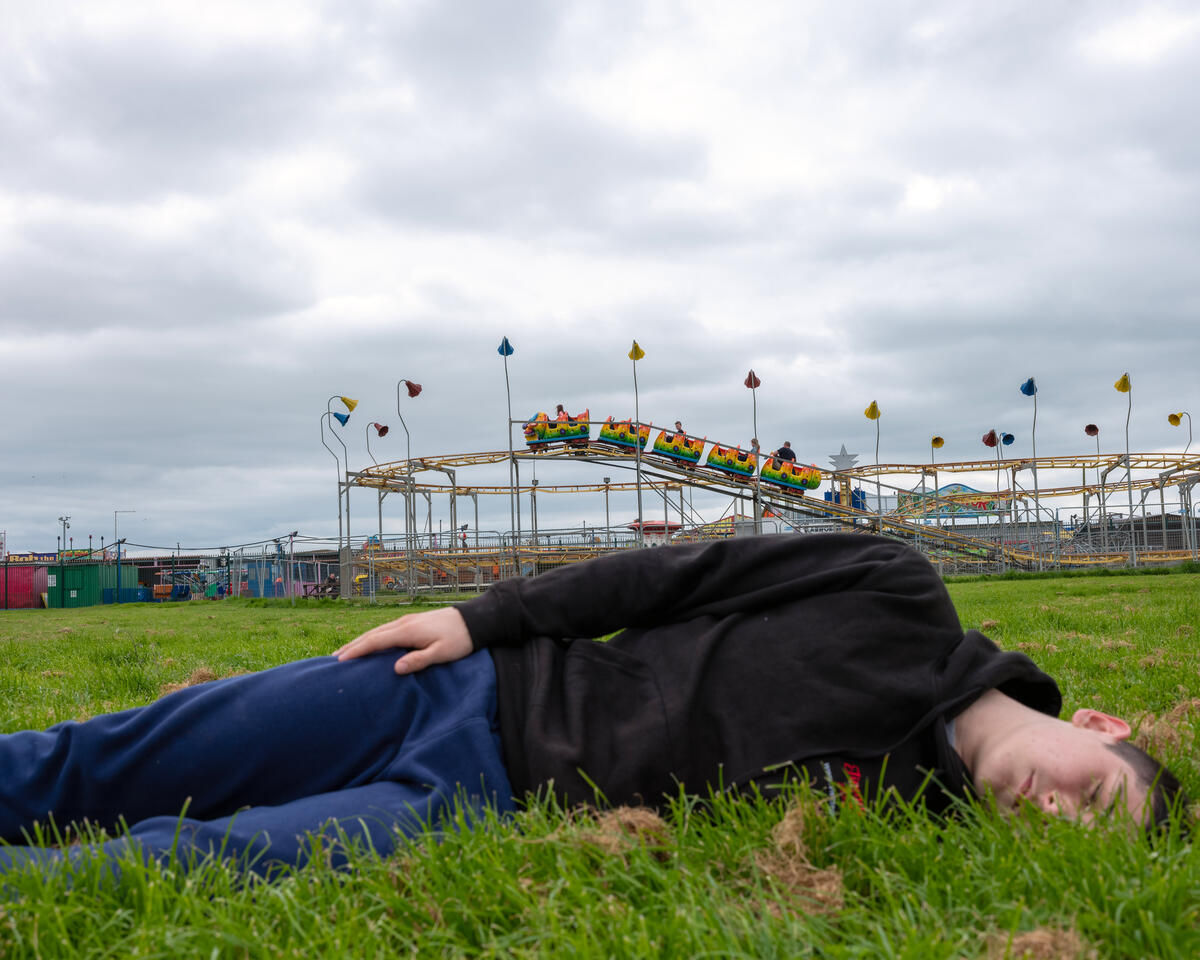The Peculiar People
An essay by Jes Fernie on the county of Essex in the UK, with photographs by Lúa Ribeira.
Is Essex a stupid place? I heard someone describe it recently as a stupid place. Perhaps it’s hard to pin down exactly what they meant, but I think we get the gist. It’s a place in which stupid people live. People with no taste, little education, and a wild desire to acquire material goods (an indoor pool, a pair of tight white trousers, fake breasts perhaps), fame for fame’s sake, and an overwhelming desire to be loved.
All of this is true! But it is also true of many places, and there are so many other ways to describe Essex. Essex is a gnarled and unforgiving place. It is the armpit of the east of England. A place where industrial effluence is accrued; old, unwanted things are washed up; and secrets remain well hidden. Its proximity to London and the Thames Estuary means that it has become an intestinal superhighway for the transport of goods and cargo from across the world. Fridges from South Korea, Christmas decorations from China, cars to Northern Cyprus — they shunt into and out of the historic port of Harwich on container ships the size of small towns, gantries looming over the horizon like ominous robotic creatures on a day trip from a futuristic past.
Essex is a leaky, porous, slow place. The relationship between salty sea water and fresh river water is hazy. The tides are fast-moving, covering great swaths of land in alarmingly brief intervals, the moon’s gravitational pull working its rhythmic magic. There is mud. Plenty of mud. The marshland, made up of sopping soft vegetation, arterial creeks and fibrous channels, is seething with life — bats, otters, water voles, they love these conditions. Curlews, with their achingly sorrowful cry and elegant, curved bills, populate the landscape like characters in a museum diorama, planting perfectly formed footprints in their wake.
The horizon is low, there is never much happening, eyes are hugged close to the ground. Sky and land merge with the aid of mist which makes a regular appearance, imbuing the landscape with a melancholy that is easy to romanticize — not much can be seen, people and dreams get lost, some manage to find new homes. You can easily disappear here, into an unruly world of constructed identities, perilous conditions, and hazy futures. You could be seen off when your house gets washed away by the sea. Coastal erosion, the gradual gnawing of land by an eager and hungry ocean, is a thing here, a thing that is increasingly urgent, violent, and destructive.
Essex has a madly long coastline — the longest of any English county. 350 miles over a relatively small area, it loops and swerves and goes back on itself, no apparent urgency to get to its final destination. Unraveling this line would be like laying out your tightly coiled, deceptively long intestinal tracts, which, in turn, would be like Mary Poppins unpacking her capacious carpet bag. You can’t believe your stomach, or the land (or the bag, for that matter) could hold so much material weight.
In the unlikely, discouraging event that things get too pretty, there’s always something that promises to break the spell. A nuclear power plant, the rotting carcass of a washed-up boat, a teenager whose prospects look bleak.
In the middle of the 20th century, Essex earned itself a reputation as a place for cheap holidays for East Enders — you could buy yourself a bit of sand and sea in the form of a self-build chalet, come down for the weekend, join in the dancing, the revelry, and the laughter. Photographs of Jaywick and Clacton in the 1950s and 60s show proudly tended holiday homes, packed social events, and children splashing about in the ocean. It’s a bit different now – these areas have been blighted by lack of investment, stunted future prospects, and unnervingly high levels of social deprivation. The towns may be scorned by outsiders, but a belligerent spirit remains — a tightknit community that refuses to be constrained or judged continues to thrive, against the odds.
This nonconformism has a proud history — anarchy and religious zealotry are part of the unlikely character of Essex. Cheap land, proximity to London, and the promise of relative isolation proved an alluring sell to people on the look-out for new beginnings, alternative living arrangements and forgiving gods. In the 19th and early 20th centuries, religious colonies and communities sprung up all over the county, at Purleigh, Bradwell, Osea Island and Hadleigh. The delightfully named ‘Peculiar People’ movement was established in the 1830s by an ex-alcoholic keen to preach the word of God to agricultural workers. It managed to expand and flourish but fractured in the early stages of the 20th century under arguments about faith healing and pacifism, issues that became hot topics at the outbreak of World War I.
Fast forward to current-day Essex and this gleeful truculence is still evidenced in spades. Unlike many other parts of the UK which proved to take a more balanced view, the people of Essex voted overwhelmingly to leave the European Union in 2016. The expressed wish that the British people should make their own rules and defy so-called ‘Brussels bureaucrats’ was emblazoned on placards across the county, against a backdrop of Union Jack enthusiasm, barely suppressed jingoism, and a plentiful supply of hopeful bunting.
When I moved to Colchester (a city in north Essex) from London twenty years ago, in search of affordable housing and childcare, I felt so alien, my body and viewpoint the wrong shape for such a place. I found the low horizons stifling and the lack of urban life draining. It took me years to understand that there is value in occupying what is considered to be the margins. A place that conjures such vivid, often negative, responses and stereotypes is, it turns out, a place worth exploring. I discovered a magical world that is rarely discussed in any serious way. I took day trips to low-lying murky islands, talked to ghosts in abandoned churches, waded through shore lines that assume the character of other planets, and dozed under oak trees so old they’re listed in the Domesday Book. It was dreamy, and continues to be dreamy — a state reinforced by the fact that much of these experiences are ones that are unsullied by the presence of other people who are too busy exploring Suffolk or Kent, or somewhere a bit more well-behaved and palatable.
Years into my Essex life, I am visited by an unknown relative from Australia who presents me with a large envelope stuffed with newspaper clippings. I sift through them to discover the story of my grand aunt who fled Colchester for Australia in 1906 in search of adventure. When her three-year stint teaching at a religious school in Perth came to an end, instead of embarking on the long-boat trip home to tend to her ailing mother, she buried her clothes in the dunes of Cottesloe Beach, cut off her hair, and dressed as a man. She changed her name from Margaret Bale to Martin Able and worked as a clerk at the National Liberal League and a ‘strong boy and cellarman’ at the Oddfellows Hotel. Her story is told in a series of sensationalist newspaper articles entitled ‘A Girl’s Remarkable Freak’, ‘In Man’s Attire’, ‘Experiences in Masculine Callings’. A crudely doctored photograph of ‘Martin Able’ sporting a stiff collar and tie sits alongside one of Margaret Bale wearing a white cotton dress, long hair, and a locket around her neck. Her father hired a private investigator to locate her whereabouts. The search was successful but she refused to come home. I am delighted and intrigued to learn that I have blood ties to this county and that I can claim a bit of the famed Essex stroppiness as my own. I find solace, too, in the fact that when I walk the streets of Colchester where I am mistaken for a man at least once a week (my height, my hair, my clothing), I can throw myself back in time and exchange a wry smile with my fabulous grand aunt.
Photographers looking to tell the story of Essex over the years have had to grapple with the powerful temptation of reconfirming well-honed narratives involving poverty, isolation, ostentatious wealth, mildly brutish behavior, and right-wing ideology. It seems that for many of them, the temptation is too enticing. The ‘Essex’ section of the Magnum and Getty Images archives are full of people sporting tattoos, bad teeth, no teeth, face-lifts, people who are old before their time, who look malnourished, over-nourished, rangy, poor and loud. People sniffing glue at bus stops, teddy boys and girls looking aggressive and proprietorial, drunk women at hen parties, people wearing pink tracksuits eating chips on the beach. There’s space now for new narratives, ones that welcomes the ghosts, the brave, the unruly, and embraces all the strangeness.
Fernie’s essay was written as a response to the representation of Essex in the Magnum archive. Ribeira then spent five days shooting in Canvey Island as a response to the essay, supported by the Essex County Council Arts and Cultural Fund. Read the full story here.



